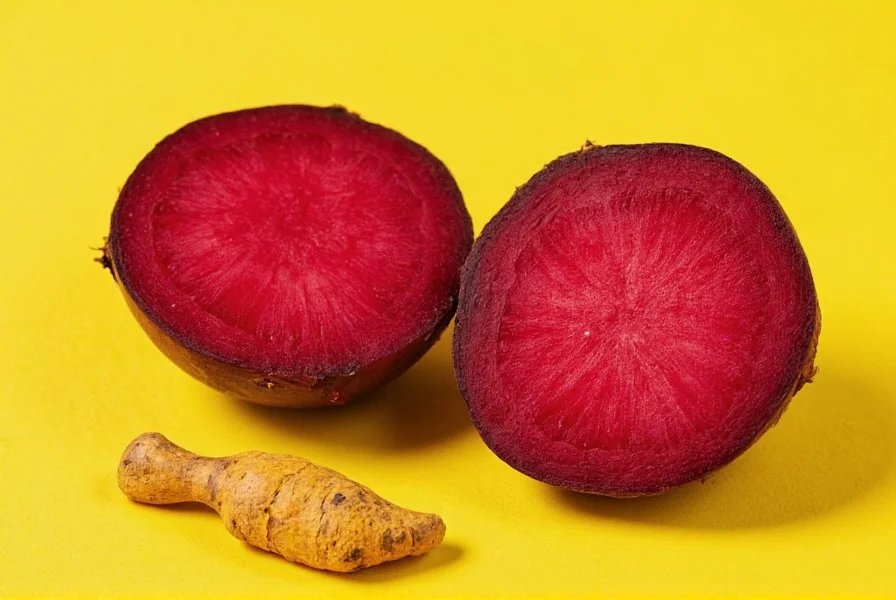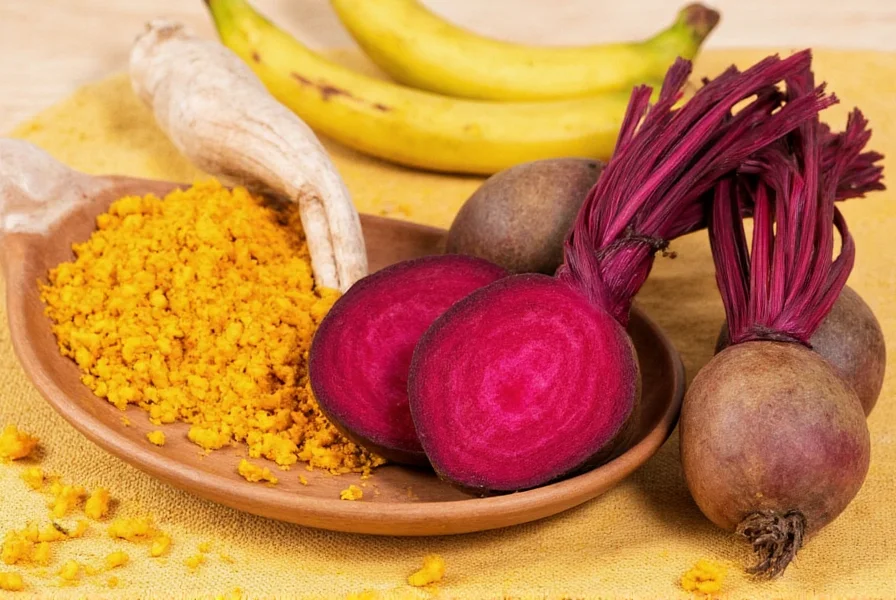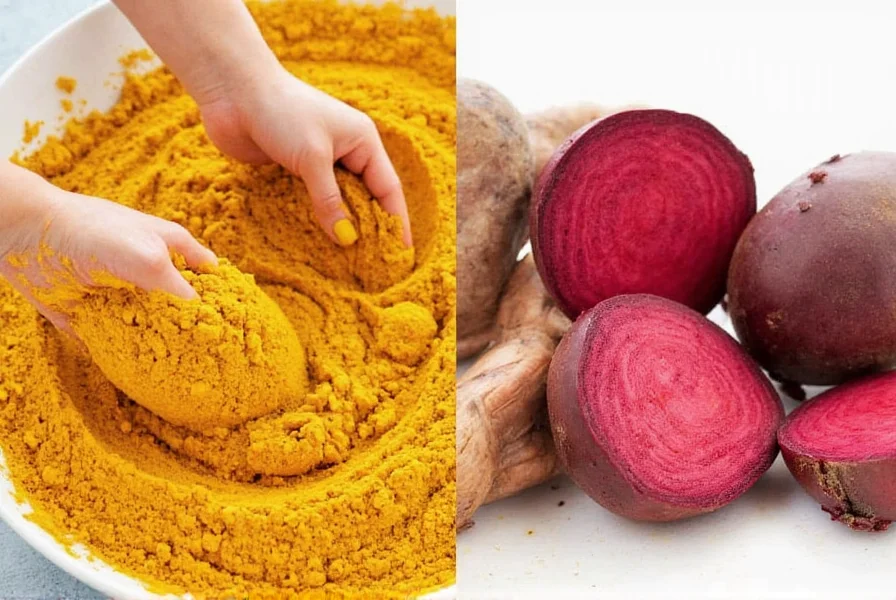Beets and turmeric represent a powerful nutritional pairing that has gained attention in functional nutrition circles. This vibrant combination isn't just visually appealing—it creates a biochemical synergy that amplifies the health benefits of each ingredient. Understanding how nutrition works beets with turmeric requires examining their individual properties and how they interact when consumed together.
The Science Behind Beets' Nutritional Profile
Beets contain several key compounds that contribute to their health benefits:
- Nitrates: Convert to nitric oxide in the body, improving blood vessel function and lowering blood pressure
- Betanin: The pigment responsible for beets' red color with potent antioxidant properties
- Folate: Essential for DNA synthesis and cellular function
- Potassium: Critical for proper muscle and nerve function
Research shows that dietary nitrates from beets can improve exercise performance by enhancing oxygen efficiency. A 2020 meta-analysis published in Nutrients found that beetroot supplementation reduced systolic blood pressure by an average of 4.4 mmHg in clinical trials.
| Nutrient | Amount per 100g | Primary Health Benefit |
|---|---|---|
| Nitrates | 120-250mg | Improved cardiovascular function |
| Betanin | 30-60mg | Antioxidant and anti-inflammatory |
| Folate | 109mcg (27% DV) | Cellular repair and DNA synthesis |
| Potassium | 325mg (7% DV) | Blood pressure regulation |
Turmeric's Bioactive Powerhouse: Curcumin
Turmeric's primary active compound, curcumin, delivers remarkable health benefits but faces significant bioavailability challenges. This polyphenol demonstrates:
- Powerful anti-inflammatory effects comparable to some pharmaceuticals
- Antioxidant capacity 10 times higher than vitamin E
- Potential neuroprotective properties through BDNF stimulation
The scientific evidence on beets with turmeric benefits reveals an important interaction: vitamin C from beets significantly enhances curcumin absorption. A 2016 study in Food Chemistry demonstrated that ascorbic acid (vitamin C) increases curcumin bioavailability by promoting its stability in the digestive tract.

Nutritional Synergy Between Beets and Turmeric
The nutritional synergy between beets and turmeric operates through several mechanisms:
Enhanced Bioavailability
Beets contain approximately 4.9mg of vitamin C per 100g, which helps stabilize curcumin during digestion. This natural pairing addresses turmeric's primary limitation—poor absorption—without requiring black pepper (piperine) or fat additions.
Complementary Anti-Inflammatory Pathways
While curcumin inhibits NF-kB (a key inflammation pathway), beet-derived betanin works through different mechanisms, creating a broader anti-inflammatory effect. Research in Journal of Agricultural and Food Chemistry shows their combined effect exceeds what either provides individually.
Cardiovascular Protection
A 2022 clinical trial published in Nutrition Research found that participants consuming both beetroot juice and curcumin supplements showed 23% greater improvement in endothelial function compared to either intervention alone.
Optimizing the Beets and Turmeric Combination
To maximize the nutrition works beets with turmeric benefits, consider these evidence-based approaches:
- Raw preparation: Blend raw beets and fresh turmeric for maximum nutrient retention
- Fat inclusion: Add 1-2 teaspoons of healthy fat (avocado, olive oil) to further boost curcumin absorption
- Timing: Consume within 30 minutes of preparation to prevent nutrient degradation
- Dosage: Aim for 100g beets with 1-2g turmeric (about 1/2 to 1 teaspoon) per serving
Cooking methods significantly impact nutrient availability. Steaming beets preserves more betanin than boiling, while heating turmeric with fat increases curcumin solubility. The best way to consume beets and turmeric for health involves minimal processing—try a raw juice combination with a splash of lemon and a drizzle of coconut oil.

Evidence-Based Applications
Clinical research supports specific applications of this nutritional pairing:
Exercise Recovery
A 2021 study in Journal of the International Society of Sports Nutrition found athletes consuming beet-turmeric juice experienced 18% less muscle soreness and 15% faster recovery of strength after intense exercise compared to placebo.
Cognitive Support
The combination shows promise for brain health. Research in Phytotherapy Research demonstrated improved memory and attention in older adults consuming both ingredients, likely due to enhanced blood flow from beets and neuroprotective effects from curcumin.
Important Considerations
While generally safe, some individuals should exercise caution:
- Those on blood thinners should consult physicians due to beet's vitamin K content
- People with gallbladder issues may need to limit turmeric
- Beeturia (red urine) is harmless but may concern some users
Practical Implementation
Incorporating this powerful pairing into daily routines doesn't require complicated recipes. Simple approaches include:
- Morning juice: 1 small beet, 1-inch turmeric root, apple, lemon, and ginger
- Salad booster: Grated raw beet and turmeric with olive oil dressing
- Roasted vegetable medley: Toss beets with turmeric, olive oil, and roast
- Smoothie base: Blend cooked beets with turmeric, banana, and almond milk
For those seeking the scientific evidence on beets with turmeric benefits in a convenient form, cold-pressed juices that maintain raw nutrient profiles offer an excellent option. Look for products that combine both ingredients without excessive processing or added sugars.











 浙公网安备
33010002000092号
浙公网安备
33010002000092号 浙B2-20120091-4
浙B2-20120091-4